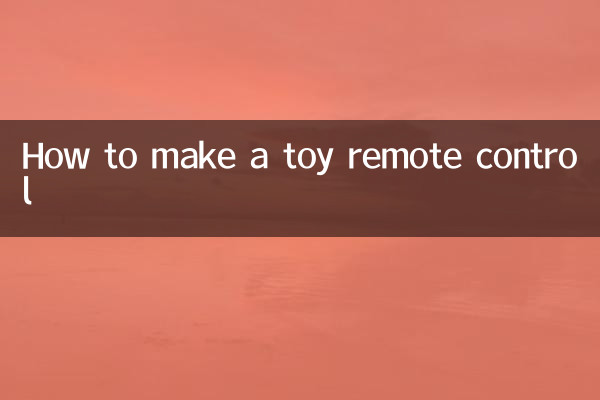How to make a toy remote control
In today's era of rapid technological development, DIY toy remote controls have become a hot topic among many technology enthusiasts and parents. Whether it's for your children to experience hands-on fun or to satisfy your own creative desires, making a simple toy remote control is a fun and challenging project. This article will combine hot topics and hot content in the past 10 days to give you a detailed introduction to how to make a toy remote control, and provide structured data for better understanding.
1. Basic materials for making toy remote controls

Making a toy remote requires some basic electronic components and tools. Here is a list of materials you may need to prepare:
| Material name | quantity | use |
|---|---|---|
| Arduino development board | 1 piece | control core |
| Wireless transceiver module (such as NRF24L01) | 2 | Enable wireless communication |
| Potentiometer or button | several | control signal input |
| battery box | 1 | powered by |
| breadboard | 1 piece | Temporary circuit setup |
| dupont line | several | Connect circuit |
2. Production steps of toy remote control
1.Design remote control functions: First determine the function of the remote control, such as controlling the direction, speed or lights of the toy car, etc. Select appropriate electronic components based on functional requirements.
2.Build the transmitter circuit: Connect the Arduino development board to the wireless transceiver module, and add a potentiometer or button as an input device. The following is an example of circuit connection at the transmitter end:
| Arduino pin | Wireless module pins |
|---|---|
| 3.3V | VCC |
| GND | GND |
| D9 | CE |
| D10 | CSN |
3.Build the receiving circuit: The receiving end also requires an Arduino development board and a wireless transceiver module, and connects the corresponding drive circuit according to the control object (such as a motor or LED).
4.Write program code: Use Arduino IDE to write the program code of the transmitter and receiver to realize the sending and receiving of wireless signals. Here is a brief description of the code structure:
| Function module | Code implementation |
|---|---|
| Initialize wireless module | radio.begin() |
| Send data | radio.write() |
| receive data | radio.read() |
5.Testing and Debugging: After completing the circuit construction and code writing, conduct testing. Check whether the remote control can accurately control the movement of the toy, and adjust the code or circuit based on the test results.
3. Hot Topics and Trend Analysis
In the past 10 days, discussions about DIY toy remote controls have mainly focused on the following aspects:
| hot topics | focus of discussion |
|---|---|
| low cost production | How to make a remote control with the smallest budget |
| Children's safety education | How to keep your children safe during DIY |
| Environmentally friendly materials | Use recyclable materials to make remote control casing |
| Intelligent upgrade | Add Bluetooth or Wi-Fi functionality to your remote |
4. Precautions
1.Safety first: During the production process, pay attention to problems such as circuit short circuit and battery overload to avoid danger.
2.Learn step by step: If you are a beginner, it is recommended to start with a simple single-channel remote control and gradually increase the complexity.
3.Resource sharing: There are a large number of open source projects and tutorials on the Internet, and you can refer to the experiences of others to speed up the learning process.
Through the above steps and precautions, you can easily create a fully functional toy remote control. Whether it is a parent-child activity or a personal hobby, the DIY remote control can bring unlimited fun and a sense of accomplishment!

check the details

check the details